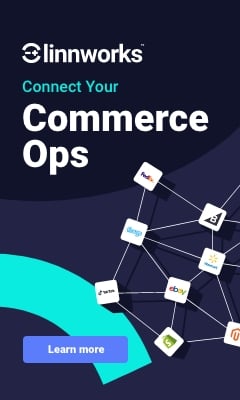Employee Engagement 2021: If you missed it, here is what we learned
Transparent communications and flexible working practices are among the vital changes professionally handled by HR executives during the past year and which are expected to remain just as important for retail employees after Covid-19.
By Glynn Davis
Speaking at The Retail Bulletin Employee Engagement 2021 virtual conference Miranda Burgum, people director at Gail’s Bakery, recalled how changes were immediately introduced when the company decided to stay open as an essential retailer with 20% of the business’s team involved.
Transparent communications
“We adapted the range, changed the rotas, and moved to take-away only, and looked to support our customers. We had twice daily leadership calls as rules were [constantly] coming through. We were fully transparent with the teams. We had two work streams – in-work and on furlough – and we held constant calls and shared feedback. Knowledge was shared across the teams,” she says.
Communication was also equally important for Lincolnshire Co-op. Just as Gail’s experienced massive increased use of its Facebook page for sharing information, Heather Lee, head of people & performance at Lincolnshire Co-op, used the company’s to reach colleagues: “It was used to nominate and announce colleague awards as well as for messaging, as a newsfeed, and connecting with colleagues. It was a way for people to ask questions and I’d then look to answer them.”
It was a similar story for Sharon Ashcroft, HR director at Ford Retail, who says the company’s app was a vital tool to share information. “We’d put out communications on the app after any government announcement so colleagues got instant communications, which showed them what to then communicate with customers. We could all see this on the app. Everybody could also see the Q&A’s. It was all transparent and we admitted when we didn’t know the answers. The communications became a bit more human,” she says.
Human element to the fore
Kirsty Rogers, employment partner at DWF, says the human element has also been evident through the work-from-home dynamic with Zoom calls effectively taking employees into leaders’ homes and also highlighting people’s personal circumstances – involving dealing with childcare and for many, being on their own at home for months.
This combination of transparency and the human element has helped highlight the purpose of many organisations. Burgum says Covid-19 has “solidified why people are here” and shown those outside the company what Gail’s stands for. This has helped with the recruitment of talent as well as retain people: “What companies have done over the past year is testament to why people will stay. One of our metrics now is how we’ve kept people over the past year.”
Fabiola Williams, chief people officer at McArthurGlen Group, agrees: “We’ve always been about mission and values but we honed this – what’s true to us and is in our DNA. We got to hear diverse voices and used other data points to refresh things. And we listened to people close to our customers.”
Flexibility with employees
The general state of flux in the market has led to people from other sectors looking to enter retail, which presents both a challenge and an opportunity. Linda Pettitt, head of talent at WorldRemit, says there is the potential for churn and the risk people are “having to take roles with companies they don’t believe in”. On the positive side Rogers says she has proactively looked to match people from hospitality with roles in supermarkets. Taking an innovative approach to recruitment could ultimately lead to new – as yet unidentified – roles being created in the retail sector.
The reality is that Alison Payne, people director at Cook, says the role of working in retail for many people has changed dramatically. “It looks very different now. It’s about bricks and clicks,” she says, adding that care has to be taken with how this affects the in-store teams.
“We’ve tried to get more IT into stores to engage with our teams and get them more involved in other projects. This makes it a bit more interesting than just packing [online] orders. Reaching out from head office has never been more important,” she suggests.
HR embracing technology
There have also been changes of approach to how people are recruited. At Lincolnshire Co-op Lee says a virtual route has been adopted for store-level recruitment: “We’ve gone onto virtual recruitment and we’ll stick with it [post-Covid-19]. It’s conducted by a central team, rather than stores, and is easier for candidates to do – including no travelling needed.”
Technology has certainly played an increasingly important role over the past year, including the automating of some processes. Neil Pickering, industry and customer insight manager at UKG, says: “Those that did not have technology have had problems because it’s then being just been about deploying [more] people. The ROI on tech has been proven. It’s about retailers finding time to find out where they are wasting time. This could be at manager, senior executive or [store] employee level.”
Pets at Home was among the many retailers to commit to boosting its technology capabilities this past year. Louise Stonier, chief people & culture officer at Pets at Home, says: “My project over 2020 was to implement digital ways to work but with Covid-19 I ended up doing it in a week! We created a variety of digital channels with amazing connectivity between colleagues and customers including using videos and the intranet. It’s the engagement we’ve enjoyed the most. Good communication is the glue and it’s the technology that has been this glue that helps keep things together.”
Marco Reick, director of people and talent at Qoot, found technology was also required to boost communications capabilities in his hospitality business: “We weren’t equipped to communicate with all team members at the start of Covid-19. The over-riding need was to communicate, communicate, and communicate. A project that would take many months was just done without any trials and that now runs as our communications tool.”
Maximising existing technology
However, care has to be taken with investment in new technology, according to Melanie Steel, non-executive director of the BRC, who says that all too often the required capability already resides within the business.
“I’d ask, what have you got already? Often retailers have gone through buying some sort of technology and then been led to believe there’s something new available. For 80% of our clients they already have something. It might not be the newest thing but they’ve probably only been using 20% of it. How do they maximise what they’ve already got,” she asks.
For more Retail Bulletin events, please click HERE














